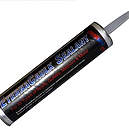What are Polyurethane Adhesives?
- 9 January 2017
- Posted by: Madhuraka
- Category: Article
 Polyurethane adhesives use a series of urethane and carbamate chains to form strong linkages between plastic polymer units, yet there’s no fixed composition inferred here. Instead, the chemical compound is customizable. The central polymer islands work with chain extenders and urethane linkages to deliver incredible bonding strength, but that’s only the beginning, for strong substances need flexibility if they’re to endure.
Polyurethane adhesives use a series of urethane and carbamate chains to form strong linkages between plastic polymer units, yet there’s no fixed composition inferred here. Instead, the chemical compound is customizable. The central polymer islands work with chain extenders and urethane linkages to deliver incredible bonding strength, but that’s only the beginning, for strong substances need flexibility if they’re to endure.
Polyurethane Adhesives
Strictly speaking, polyurethane compounds are a family of thermoplastics, polymers that melt and flow when heated. Again, formula diversity is in evidence here, because thermosetting variations are available. The base material builds a framework of plastic units. The material then uses long urethane linkages to lock the plastic units into a unique configuration. The polyol linkages bind with polyisocyanates and chain extenders to create a highly reactive glue. In this case, it’s a tacky fluid, one that already exhibits a viscous nature.
Sticky by Design
Let’s put organic chemistry to the side for the moment. It’s a complex topic, after all. In essence, the strong plastic backbone uses a tacky form, a configuration that already demonstrates proven strength, and this is before any curing takes place. Imagine strong polyurethane adhesives holding parts in place without the need for clamps or any kind of support mechanism. PU or PUR adhesives are entirely capable of accomplishing this feat. That same highly configurable chemical makeup also imbues the bonding family with a long list of attractive features. Strength and stickiness top the list, followed by a high flex feature. Next, the ability to form a fast curing bond in any kind of environment must receive attention.
Performs Well in All Environments
This desirable attribute applies to water, temperature variables, and chemical adversity. Think about that single statement for a moment. Here’s a bond that fixes the surfaces of parts inside a car or building, but that same adhesive can easily handle the fastening of that same car’s windscreen. As for the building industry, the urethane and carbamate chains adapt chemically to act as linkages in roofing materials. Capable of gluing wood to metal and vice versa, polyurethane compounds permeate every sector of the adhesive market.
Initially, this bonding group seems successful because of its strength, but what about an ability to fasten any kind of substrate? Material density is also customizable, with glutinous and rock hard variables curing to provide endless fastening permutations. In the end, it’s really the versatility of the compound that wins through, its talent for acting as a perfect solution for any application.

